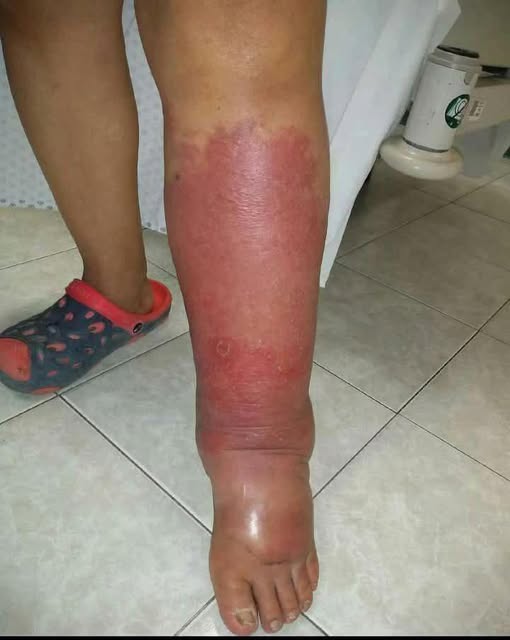How I Got Rid of Swollen Ankles, Feet, and Legs, Without Medications

For years, I silently struggled with swollen ankles, puffy feet, and heavy legs. It wasn’t just discomfort—it was visible, persistent swelling that left clear dents in my skin whenever I pressed down, a condition known as pitting edema. The most baffling part? I was young, relatively healthy, and wasn’t on any medications. My bloated face and balloon-like ankles seemed like isolated cosmetic issues at first, but they were symptoms of a deeper imbalance I had never considered: my blood sugar.
Edema occurs when fluid becomes trapped in the body’s tissues, most often in the lower legs, feet, and ankles. Doctors commonly associate it with underlying conditions like heart failure, kidney disease, liver issues, or side effects from certain medications. Excess sodium in the diet is also a known contributor. But in my case, none of these traditional causes applied. After months of trial and error, I learned that the root of my problem wasn’t in my organs or salt shaker—but in the microscopic sodium-potassium pumps inside my cells.
These tiny cellular pumps are responsible for keeping fluid balanced inside and outside every cell in your body. They push sodium out while pulling potassium in, creating a healthy flow that prevents fluid from collecting where it shouldn’t. When these pumps malfunction, fluid starts to leak out into surrounding tissues—and swelling begins.
So what causes the pumps to fail? In my case, and in many others, the silent saboteur was sugar. Consuming too many refined carbohydrates over time spikes blood sugar levels. This triggers a damaging process called glycation, where sugar molecules bind to proteins in the bloodstream. That sticky mess disrupts circulation and contributes to the breakdown of the sodium-potassium pumps. Worse still, glycation can lead to nerve damage, manifesting as numbness or tingling in the extremities—even in people who haven’t been diagnosed with diabetes.
The key to healing didn’t come from medication, compression socks, or water pills. Instead, I turned to cellular repair—specifically, giving my body the exact nutrients needed to rebuild those critical pumps. Three nutrients became central to my recovery: potassium, magnesium, and vitamin B1 (also known as thiamine).
Potassium was the first and most important element. It directly powers the sodium-potassium pump, yet it’s one of the most common deficiencies in modern diets. Despite being found in leafy greens, avocados, bananas, and sweet potatoes, many people don’t get nearly enough potassium daily to meet their body’s needs—especially those consuming high-sugar diets.
Next came magnesium. Known for supporting muscle function and relaxation, magnesium also helps fuel the pumps by enabling ATP (the energy molecule every cell uses). A magnesium deficiency can leave cells sluggish and unable to properly regulate fluid.
Finally, vitamin B1—or more precisely, benfotiamine, a fat-soluble form of thiamine—played a pivotal role. Thiamine helps the body process carbohydrates efficiently. Without enough of it, sugar lingers in the bloodstream, accelerating glycation and damaging blood vessels. By restoring my B1 levels, I gave my body the ability to properly manage the sugar I was consuming and minimize its harmful effects.
Alongside these nutrients, I made a dramatic shift in my diet. I cut out refined carbs—white bread, sugary drinks, pastries—and focused on whole foods that would nourish rather than deplete me. I loaded my meals with greens like spinach and kale, added seeds and avocados to my snacks, and incorporated nutritional yeast and thiamine-rich supplements where needed.
The result? Within just a few days, the swelling in my ankles noticeably reduced. The puffiness in my face began to fade. Two weeks later, the edema was gone. No prescriptions. No invasive treatments. Just nutrient support and smarter food choices.
This experience taught me an important lesson: the body doesn’t break down overnight, and it doesn’t heal that way either. But when we identify the true source of the problem—not just treat the symptoms—we give our bodies a chance to restore balance naturally.
Today, I no longer live in fear of looking down at my feet and seeing painful, bloated skin. I understand what my body needs, and I listen to its early warnings before they become chronic issues. If you’re struggling with unexplained swelling, fatigue, or tingling in your limbs, don’t ignore it. The solution might be simpler—and more powerful—than you think.
You don’t need a medicine cabinet full of pills to fight edema. You need knowledge, the right nutrients, and a willingness to change what you put on your plate. Once you do, the transformation can be fast, effective, and lasting.





